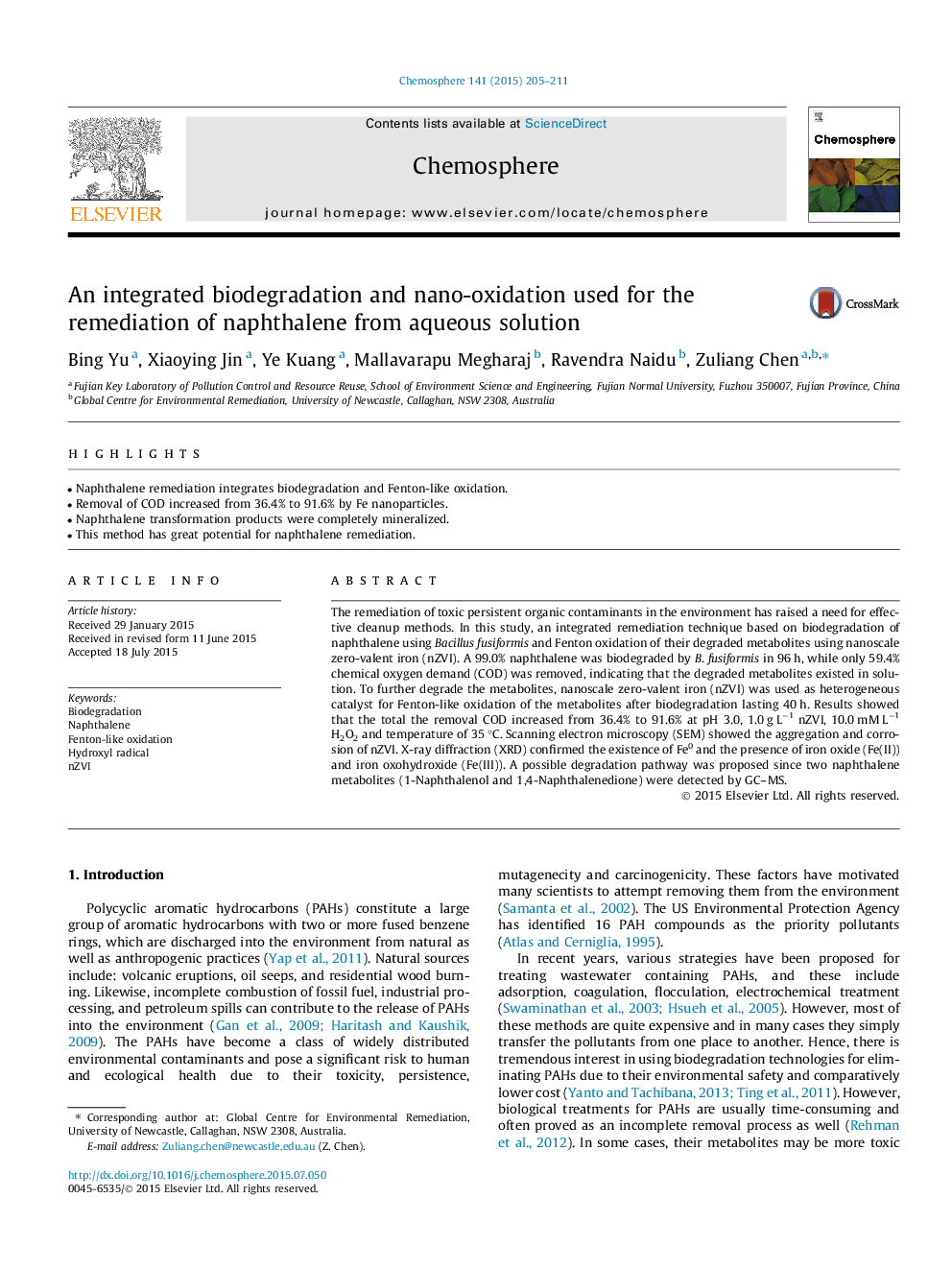| Article ID | Journal | Published Year | Pages | File Type |
|---|---|---|---|---|
| 6307370 | Chemosphere | 2015 | 7 Pages |
Abstract
The remediation of toxic persistent organic contaminants in the environment has raised a need for effective cleanup methods. In this study, an integrated remediation technique based on biodegradation of naphthalene using Bacillus fusiformis and Fenton oxidation of their degraded metabolites using nanoscale zero-valent iron (nZVI). A 99.0% naphthalene was biodegraded by B. fusiformis in 96 h, while only 59.4% chemical oxygen demand (COD) was removed, indicating that the degraded metabolites existed in solution. To further degrade the metabolites, nanoscale zero-valent iron (nZVI) was used as heterogeneous catalyst for Fenton-like oxidation of the metabolites after biodegradation lasting 40 h. Results showed that the total the removal COD increased from 36.4% to 91.6% at pH 3.0, 1.0 g Lâ1 nZVI, 10.0 mM Lâ1 H2O2 and temperature of 35 °C. Scanning electron microscopy (SEM) showed the aggregation and corrosion of nZVI. X-ray diffraction (XRD) confirmed the existence of Fe0 and the presence of iron oxide (Fe(II)) and iron oxohydroxide (Fe(III)). A possible degradation pathway was proposed since two naphthalene metabolites (1-Naphthalenol and 1,4-Naphthalenedione) were detected by GC-MS.
Related Topics
Life Sciences
Environmental Science
Environmental Chemistry
Authors
Bing Yu, Xiaoying Jin, Ye Kuang, Mallavarapu Megharaj, Ravendra Naidu, Zuliang Chen,
